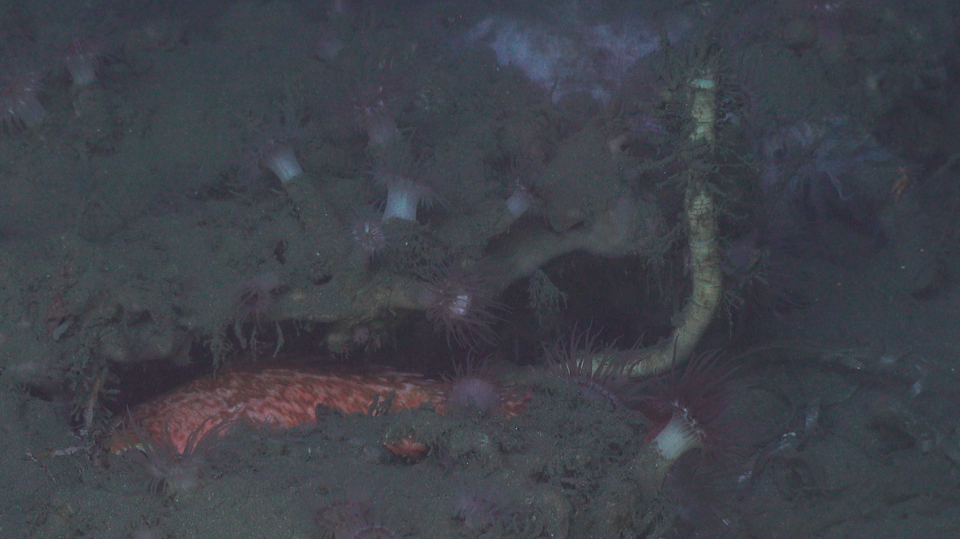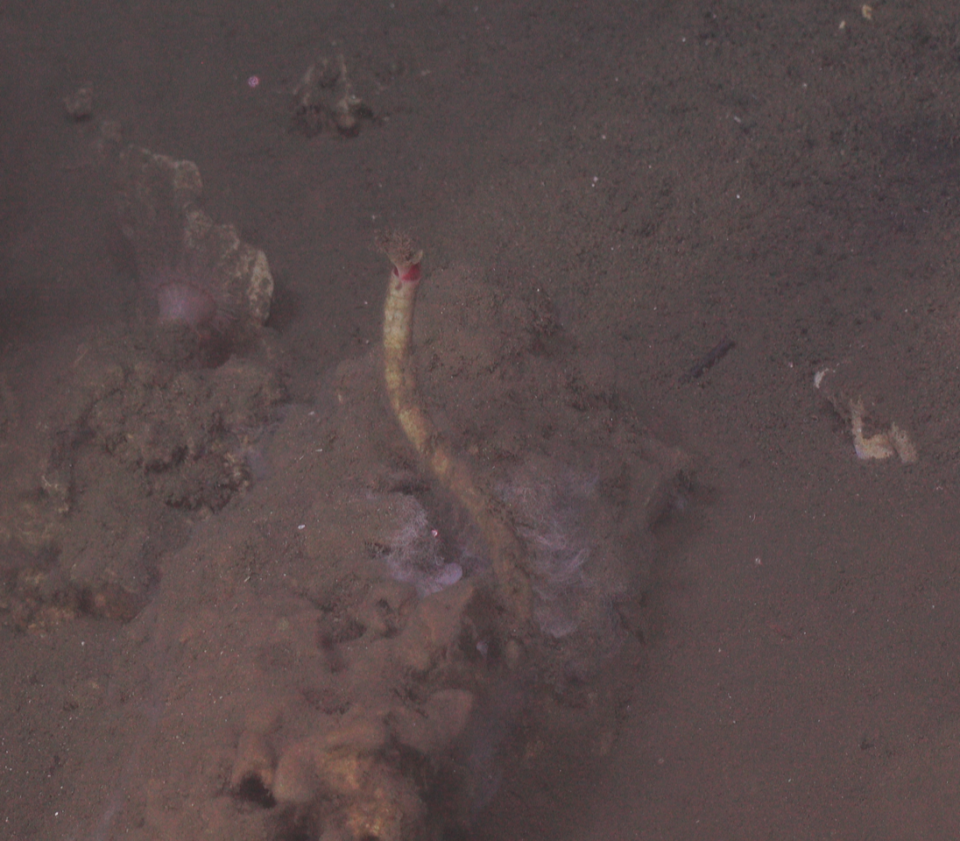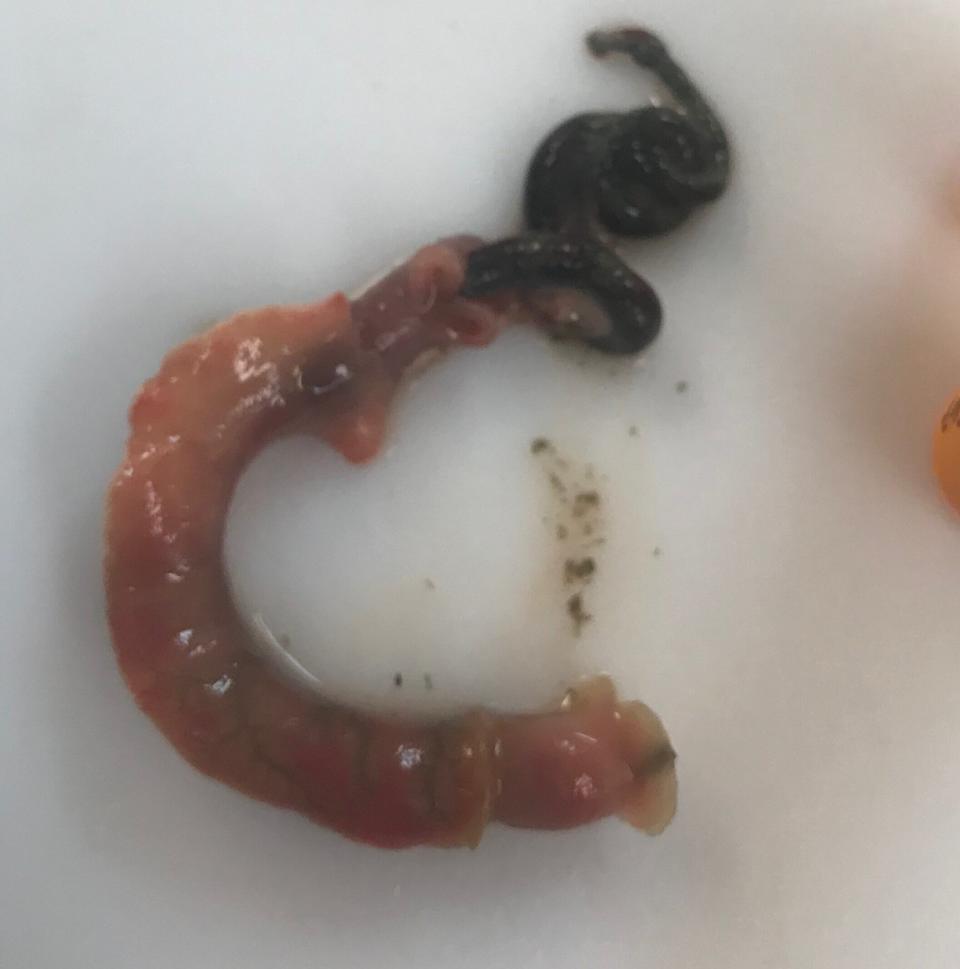Scientists Just Discovered A Bizarre Deep-Sea Tubeworm Off The Atlantic Coast
Scientists got a welcome surprise last month when they discovered deep-sea-dwelling tubeworms while exploring off the east coast of the United States. It is the first time this type of worm has been seen in the eastern North Atlantic.
These strange invertebrates, a species of vestimentiferan tubeworm, live inside a hardened tube-like structure and have no digestive system. The worms were first spotted using a remotely operated vehicle named Jason at a site called Pea Island, located 36 miles off the coast of North Carolina and one of hundreds of bacteria-rich methane seeps recently discovered off the Atlantic coast.
Vestimentiferan tubeworms inhabit seafloor gas seeps and hydrothermal vents elsewhere around the globe, including the Gulf of Mexico, the Caribbean and the Mediterranean, but had not previously been documented in this part of the Atlantic.

News of the find comes on the heels of a sobering United Nations report released Monday that found up to 1 million species of land and marine species are at risk of extinction due to human actions.
Amanda Demopoulos, a deep-sea benthic ecologist at the U.S. Geological Survey and chief scientist of the expedition, called the initial discovery “serendipitous.”
“We were trying to break off a piece of rock for a collection when the worm appeared seemingly out of nowhere,” she said in a statement. “It was hidden from view, buried in a crevice within the larger rock.”

The research team subsequently collected additional tubeworms at a methane seep north of Pea Island. The worms, which are relatives of the giant tubeworms found at deep-sea hydrothermal vents, host bacteria with which they have a symbiotic relationship and that use chemosynthesis, a process similar to photosynthesis, to convert hydrogen sulfide into food for the worms.
The three-week research expedition in April was part of a multiyear study called Deep Search, a government-funded project to identify and explore sensitive cold seeps, canyons and coral ecosystems in the deep Atlantic ― a swath of ocean that remains largely unexplored. During a two-week cruise last year, the research team discovered an 85-mile-long deep-sea coral reef more than 150 miles off the coast of Charleston, South Carolina, as HuffPost first reported.
Erik Cordes, the project manager of Deep Search and a biology professor at Temple University, has been studying tubeworms in the Gulf of Mexico for years and expected that they would one day turn up in the Atlantic.
“I always thought we would eventually find them,” he told HuffPost. “It didn’t really make sense that they weren’t on the East Coast.”

There are 21 described species of vestimentiferan tubeworms, according to Cordes. And while the newly discovered worms are similar to those seen elsewhere, Cordes suspects they are a new species. But he stressed that verification will require detailed future genetic analyses.
The new discovery, Cordes added, is yet another reminder of how little we know about ocean ecosystems right in our backyard.
“Just like the coral reef last year,” he said. “They’re right there, one of the most populated and well-traveled places on the planet, and we’d never seen these things.”
This article originally appeared on HuffPost.

